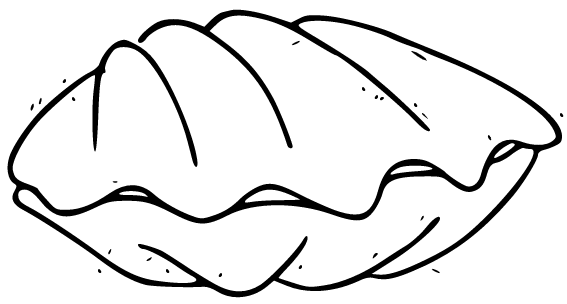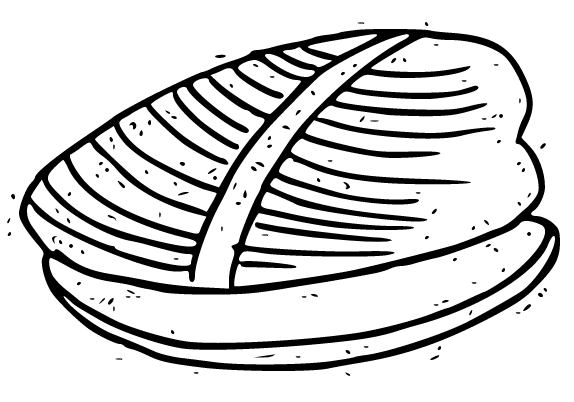-

-
The Discerning Mollusk's Guide to Arts & Ideas
-


Surface Studies
Mike Corrao
Action Books, Apr 2024
ig books are safe books. No one questions a commuter wielding a thick volume. Big books make good bankers. They nestle bills and conceal the wallet, phone, or whatever else bulges from your pants (David Foster Wallace writes that “dictionaries tend to be hard on the lap,” but who commutes with a dictionary). Weaponlike, they are rarely wielded for their inherent blunt mass. Have you ever thrown a big book? It’s a chaotic sight. Tap a big book and you will hear the hollow thud of a sourdough loaf. Scrape it against your lips and it will not cut you. Big books are lazy, preferring to press butterfly wings or stop a door or adorn a desk. Sensitive to dust, they wear jackets. Those who carry them have safety in numbers. They go to places where other people carry the same flailing, lazy, sensitive book.
Slim books are the scary ones. They do not frequent book clubs. They have velocity, and velocity is the medium of both poetry and politics. Slim books instigate revolutions.
The book I hold in my hands has forty-five pages. The cover is black and orange, featuring a ferocious monochrome illustration by the author. 5 x 7 inches. A subtitle appears in the cover’s lower right corner, set in an intense, nearly indecipherable font. Two dotted vertical lines run down the cover’s center. Tempted, I pick up scissors. Author Mike Corrao’s ferocious illustration is the first to fall, followed by the vertical words SURFACE STUDIES. I now have two bookmarks. Yet it feels wrong to stuff them into the maimed little book, like feeding chicharrón to a piglet.
What do surface descriptions teach us about literature? Over the course of the twentieth and twenty-first centuries, there have been many attempts at defining a mode of criticism that is so obvious as to be counterintuitive: read closely, but not in the usual places. Various mutations of phenomenological, reader-response, and book-historical modes plumbed the depths of literary perception whilst not disturbing the tranquil waters of structure and form. A superficial, non-exhaustive overview of some of the most cited examples: Louise Rosenblatt (1938) argues that readers matter; Roman Ingarden (1960) observes that meaning peels away in paper-thin layers; Stanley Fish (1967) opines that readers are of many minds; Georges Poulet (1969) wonders if books could talk; Wolfgang Iser (1974) demands that the reader look at themselves in the mirror; Michel de Certeau (1984) charges that the reader is a poacher. These foundational texts, disparate in their motivations, all challenged critics to maintain their identity as readers.
More recent examples of reader-centric theory have adopted a more confrontational approach to perception as a mode of criticism. Stephen Best and Sharon Marcus’s 2008 article on “surface reading” opens with a provocation: in literary theory, symptom and surface are at war. The former, typified by psychoanalytic and Marxist hermeneutics (most famously in Fredric Jameson’s The Political Unconscious), basically suggests that in order to reveal meaning, a text must be interrogated, diagnosed, pillaged, or subjected to some other verb borrowed from the military-psychiatric-complex. Surface reading, by contrast, offers a gentler (one could even say nihilistic) approach to criticism, which listens to the text on its own phenomenological terms.
It was this mode of criticism that brought me to read Mike Corrao’s Surface Studies. Corrao, an interdisciplinary artist, poet, and critic, invites you to judge the book by its cover. But one looks in vain for mention of Fish or Iser or Best/Marcus in its pages. Surface Studies is not a scholarly book. The title is therefore deceptive, a Trojan Horse for a footnote-hungry academic: no new subfield is announced, no scholarly literature is reviewed, no footnotes, no bibliography—nothing that gestures, on the surface, to the performative conceit of the title’s Studies. Rather than build on lit-crit discourse, it performs it. Corrao embodies those unmentioned reader-centric modes of criticism convincingly and inconspicuously, like a method actor deep into character.
Surface Studies looks and feels like the chapbooks it discusses. It unfolds via a series of short “topographical readings” of nine works, cited here in order of appearance: Candice Wuehle’s Death Industrial Complex (2020); Evan Isoline’s O! The Scarcity of Gore (2019); John Trefry’s Apparitions of the Living (2018); Ed Steck’s An Interface for a Fractal Landscape (2019); Metahaven’s Digital Tarkovsky (2018); M. J. Gette’s Majority Reef (2020); Vi Khi Nao’s Sheep Machine (2018); Joyelle McSweeney’s Toxicon and Arachne (2020); and Olivia Cronk’s Womonster (2020). Why bring these nine works together? Some have already been treated in print by Corrao, so Surface Studies is partly a compilation of the author’s previous reviews. These works could be filed under some wordy sub-sub-subgenre like “post-millennial, pre-pandemic, experimental, indie, underground lit,” but even such a monstrosity would not do justice to the more ekphrastic or multimedia works covered here, like Digital Tarkovsky and Majority Reef.
Instead, what connects these case studies is how they imprint upon Corrao in similar ways. Corrao does not read these works, he moves through them, letting their unique surface topographies guide the way. In his chapter on Death Industrial Complex, he calls this “archi-text-ure.” Metaphors come and go in Surface Studies, some contradictory. While Majority Reef is “a living, breathing work of poetry” capable of roots and mutations, a work like Interface for a Fractal Landscape is cybernetic, “the raw data of a program and its read-me notes printed and bound.” While these modulations seem dizzying, they are also necessary in what Corrao is trying to do. Surface Studies dares the reader to look at a page of writing the way a cinematographer peaks through a half-closed fist. To Corrao, the page is a “medium for staging/interfacing/performance.” Each text stages its own mise-en-scène, its surface tension determining Corrao's analysis down to the keystroke.
Take his chapter on Apparitions of the Living, which appears on page eleven with the title “Flesh Objects.” Whereas the first ten pages propel the reader with elegant but direct prose (on the very first page he even numbers his concepts, a pedantic move second only to bullet points), “Flesh Objects,” with its replacement of punctuation with quasi-stanzaic slashes, shows how deep Corrao will go into his role as surface reader:
You have before you / a work in the expanded field of literature / John Trefry’s Apparitions of the Living / a text constructed as if it was an object / with the knowledge that it is an object/ margins grow and shrink / prose condensed into a central column / then stretched across the page / inhaling and exhaling / shifting perspectives / typeset in the digital successor to the Palatino of Robbe-Grillet’s Topology of a Phantom City / “to which this work is indentured” / a text with physical attributes that cannot be ignored / that lays on the table in front of you / that is read and that knows it is being read //
Can a text “know it is being read?” With that line, Corrao thrusts us back to Poulet and the first reader-responders. Surface Studies, maybe despite itself, speaks directly to decades’ worth of theory. In fact, it shouts over it, showing and not telling, feeling and not describing. A dangerous little book.

Jacek Blaszkiewicz is an assistant professor of music history at Wayne State University in Detroit, Michigan. His first book, Fanfare for a City: Music and the Urban Imagination in Haussmann's Paris, was published in 2024 by the University of California Press. @jacekbl.bsky.social